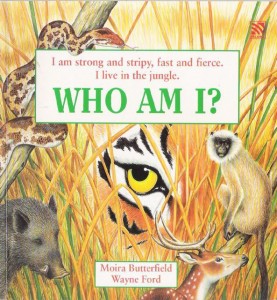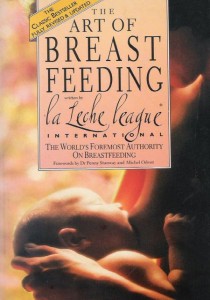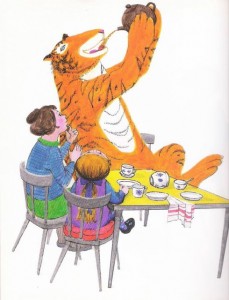One day when Sophie and her mummy were having tea in their kitchen, there was a knock on the door. It was a big, furry, stripy tiger that happened to be famished.
So Sophie’s mummy invited him to tea and he ended up eating everything that was edible in their house. He ate all the food that was on their table, all the food that was cooking on the stove, all the food that was in the cupboards, and even drank all the water in the tap.
First published in 1968, Judith Kerr’s classic picture book The Tiger Who Came to Tea was a definite favourite in our household when the children were young. I would get request after request every night to read it aloud—twice, thrice, four times, five times…one more time, mummy please, one more time!
The Tiger Who Came to Tea is full of unbelievable, yet totally ordinary, things that appeal to the very accommodating common sense of children.
Imagine having that hungry carnivore inside your home, sitting at your kitchen table and sharing—no, make that eating up—all your food. Scary? You might be his next meal! Therein lies the clever juxtaposition between real and imaginary, that children love and so easily identify with.
Kerr, who fled Nazi Germany with her family when she was nine and who eventually settled in England, made her name as an author and illustrator with this book. That it is still in print after 42 years is a testimony to its timeless charm and the fearsome fascination that it inspires in children.
The Tiger Who Came to Tea has even been made into a 55-minute stage show with songs and lyrics that is being presented in theatres around the UK.
Kerr reportedly created the story after bringing her three-year old daughter on a visit to the zoo. It took her a year to write and illustrate and that was only after telling and re-telling it countless times in her head.
Did you know?
 Tigers, according to Moira Butterfield’s Who Am I? series, are stripy, fast, fierce, furry, big and strong; with sharp teeth, long tails, striped coats and bright eyes. They hunt in the night, creeping through trees looking for animals to eat.
Tigers, according to Moira Butterfield’s Who Am I? series, are stripy, fast, fierce, furry, big and strong; with sharp teeth, long tails, striped coats and bright eyes. They hunt in the night, creeping through trees looking for animals to eat.
- Tigers are now an endangered species and wild tigers in Asia may soon disappear. In spite of 20 years of international conservation efforts, all remaining sub-species of tigers are now on the list of critically endangered animals.
- Man has been hunting tigers as a sport since the early 19th century. The tiger is also hunted for its fur and various other body parts that are believed to have medicinal value as painkillers and aphrodisiacs.
- According to experts, increased land clearing and development have destroyed the tiger’s habitat posing a major threat to their survival.
- It is believed that there were more than 100,000 tigers in the world at the beginning of the 20th century but that this number has since dwindled to about 2,000. WWF Malaysia says that there are between 5,000 and 7,500 tigers surviving in the wild all over the world.
More tiger facts can be found here.
 This post is our contribution to the Tiger Blogfest 2010 (even though we did not register in time!), which is a week in April where bloggers blog about the need to protect our tigers.
This post is our contribution to the Tiger Blogfest 2010 (even though we did not register in time!), which is a week in April where bloggers blog about the need to protect our tigers.







